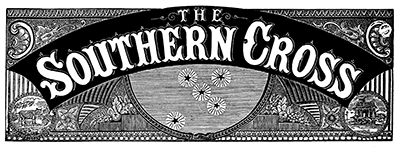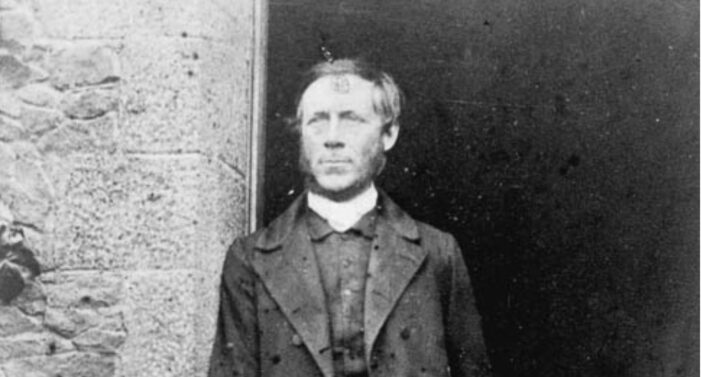Karl Sylvius Völkner, a missionary of German origin, arrived in New Zealand in 1849, representing the North German Missionary Society. He initially worked in Taranaki with Johann Riemenschneider, another German Protestant missionary. In 1852, he joined the Church Missionary Society (CMS) as a lay teacher in lower Waikato. After marrying Emma Lanfear, he was ordained as a deacon in 1860 and a priest in 1861, subsequently taking over the CMS mission station at Ōpōtiki in August 1861.
Rangiaowhia was a thriving agricultural settlement near Te Awamutu. For over 20 years, it was a productive village on a ridge between two streams in the Waikato region. It was the site of a very productive Māori mission station until the Invasion of the Waikato in 1864. The station served Ngāti Hinetu and Ngāti Apakura.
In 1851, Rangiaowhia was described as a place with about a thousand acres under cultivation. It was a very industrious village with a large population of Maori engaged in industry and agriculture. The village was surrounded by a fence many miles in circuit; roads were made in various directions; bridges were thrown over impassible swamps; and a good many mill-dams were constructed.
However, at dawn on 21 February 1864, Rangiaowhia was the site of one of the most horrific war crimes ever perpetrated by the Crown against Māori in New Zealand’s history. Its capture by the British in February 1864 was a severe economic setback for the Kīngitanga and a major blow to Māori morale.
Allegations of Espionage
Völkner was well-received by Te Whakatōhea in Optotiki, who constructed a church and a school for the mission station. However Völkner was suspected of spying for Governor George Grey. This suspicion was fueled by letters he had written to Governor Grey in 1864. Völkner had also played a role in the removal of a popular Catholic missionary, Joseph Marie Garavel, accusing him of acting as a messenger for Waikato Māori. Garavel, in turn, supported the allegations of Völkner’s espionage.

Rangiaowhia in February 1864, by J A Wilson
Völkner himself was reportedly engaged in espionage, providing Governor Grey with strategic locations of the local Maori in the Waikato. These actions are believed to have precipitated invasions across the upper North Island, resulting in the devastation of numerous communities. The consequences of Völkner’s actions were far-reaching and tragic, leading to the deaths of thousands of innocent individuals.
Sunday 21 February 1864 British forces, who had invaded Rangiaowhia, set fire to a Whare Karakia, a Catholic Church. Tragically, the wife and children of Kereopa Te Rau were inside the church at the time and were killed by the British troops during the arson attack.
At the time of the incident, Kereopa Te Rau was at the Pa at Paterangi. Upon hearing the devastating news of his family’s brutal massacre by the British forces, he was filled with grief and anger.
Kereopa Te Rau believed that Karl Volkner was the one who had disclosed the location of the Church at Rangiaowhia to Governor Grey. Consumed by a desire for Utu, or revenge, he held Volkner responsible for the tragic loss of his family.
The Unfortunate Demise
Ignoring local warnings, Völkner returned to Ōpōtiki with fellow missionary Thomas Grace on 1st March 1865. Driven by a desire for justice, Kereopa Te Rau pursued Karl Volkner to his mission in Optotiki. There, Kereopa Te Rau held Volkner accountable for the deaths of his wife and children, whom he believed Volkner was responsible for. Consequently, Kereopa Te Rau executed Karl Volkner by hanging him from a willow tree.
Aftermath
The demise of Völkner sent a wave of shock throughout the colony. His death was used by the colonial government as a justification for initiating severe military action against Maori ostensibly for the purpose of land acquisition. This incident triggered a military manhunt for Kereopa Te Rau across the North Island involving thousands of troops and led to the brutal invasion of Opotiki and Tuhoe territory. In these invasions, hundreds of innocent civilians were massacred in an attempt to avenge Karl Volkner’s death.
Adjusting the history to justify colonisation
The hate group Hobsons Pledge has been accused of attempting to rewrite the history of Rangiaowhia, denying any atrocities that took place there. The issue with Hobson’s Pledge’s approach to historical collection is their perceived bias against Maori, as they allegedly disregard firsthand witness accounts even from colonists who described the church being burnt to the ground with women and children inside.
Eyewitness reports of the massacre at Rangiaowhia are vivid and disturbing. However, Hobson Pledge prefers to alter the historical record, promoting the idea that Kereopa Te Rau killed Karl Volkner without a reason, rather than as a response to Volkner’s alleged espionage that led to the death of Kereopa Te Rau’s wife and children.

